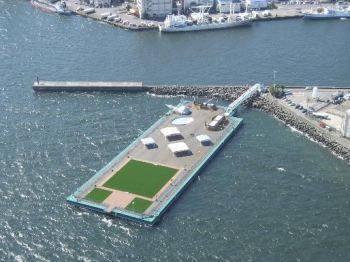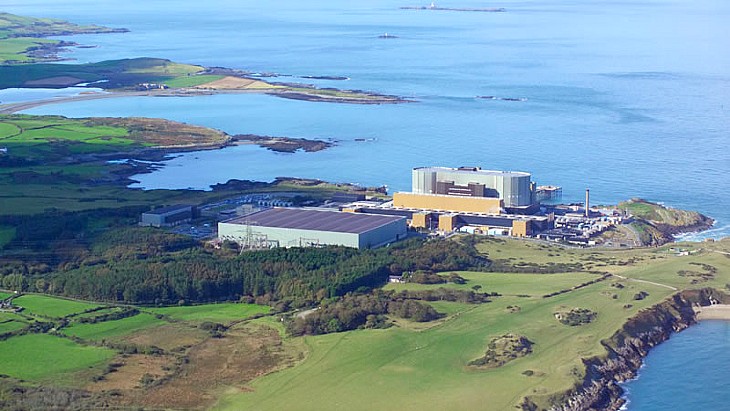FIRST PUBLISHED: 3.58pm GMT
UPDATE 1: 4.28pm GMT, New earthquake and Edano statement
A vast floating structure dubbed Mega-Float is being prepared to store contaminated water from the stricken Fukushima Daiichi nuclear power plant. Northeast Japan was hit by another earthquake today as the cost of the 11 March disasters was put at up to $290 billion.
 |
| The Mega-Float as a fishing park (Image: Shizuoka City) |
The Mega-Float is 136 metres long and 46 metres wide - similar in size to a football pitch - and three metres high. It can store approximately 10,000 tonnes of water. The float has been provided by Shizuoka prefecture, at the request of the Tokyo Electric Power Company (Tepco). It has now arrived at the port of Yokohama, where it will be examined and modified so that it can be used to store contaminated water from the plant. The work is expected to take one or two weeks.
Tepco has faced increasing problems with large bodies of water at the Fukushima Daiichi site, some of which have significant levels of radioactivity. Turbine buildings have flooded basements, and cabling trenches are also full of water. A 20 centimetre crack in a concrete shaft at unit 2 through which contaminated water had been leaking directly into the sea was sealed on 5 April. Steps have also been taken to release some 11,500 tonnes of less contaminated water into the sea to free up space in the plant's central radioactive waste management facility for water which is more heavily contaminated.
Seawater is being monitored for radioactivity at various sampling points including close to the two Fukushima power plants and at various points 15 kilometres off shore.
| Edano statement
Japan's chief cabinet secretary, Yukiyo Edano, spoke to the World Economic Forum's Global Risks meeting in New York today. He said the country continues to do its utmost to prevent the diffusion of radiaoctive materials, placing the highest priority on the health and safety of local residents while planning for all possible scenarios. "Japan intends to share with the international community the knowledge and experience obtained through this situation in order to contribute to reinforcing the safety of nuclear power generation."
The effect on Japan's manufacturing bases in the northeast was noted, although this counts for only 2% of the overall damage, which Edano said was estimated "at a scale of ¥16-25 trillion ($180-$290 billion)."
Seismic activity remains elevated, with another earthquake of magnitude 7.4 today just before midnight. It produced a tsunami with a peak height at the shore of about two metres. The wave at the Fukushima Daiichi nuclear power plant would have been about 50 centimetres.
Japan intends to launch the "world's most advanced reconstruction plan" along the lines of the "miraculous" reconstruction after World War II, which was done "through the efforts of each individual citizen in the face of adversity."
In the rebuilt areas, "We will situate residences on higher ground carved out of mountainsides and commute to fishing ports and other workplaces along the coastlines. We will create ecotowns that are fully equipped with district heating utilizing plant matter and biomass from the region and cultivate features of communities that thoroughly foster public welfare. We will proceed by moving forward with the world's most advanced reconstruction plan, with a vision of going beyond mere restoration to the previous state and instead create a truly marvelous Tohoku region and indeed a marvelous Japan."
|
Researched and written
by World Nuclear News




_50545.jpg)


_70761.jpg)
_76087_55556.jpg)




